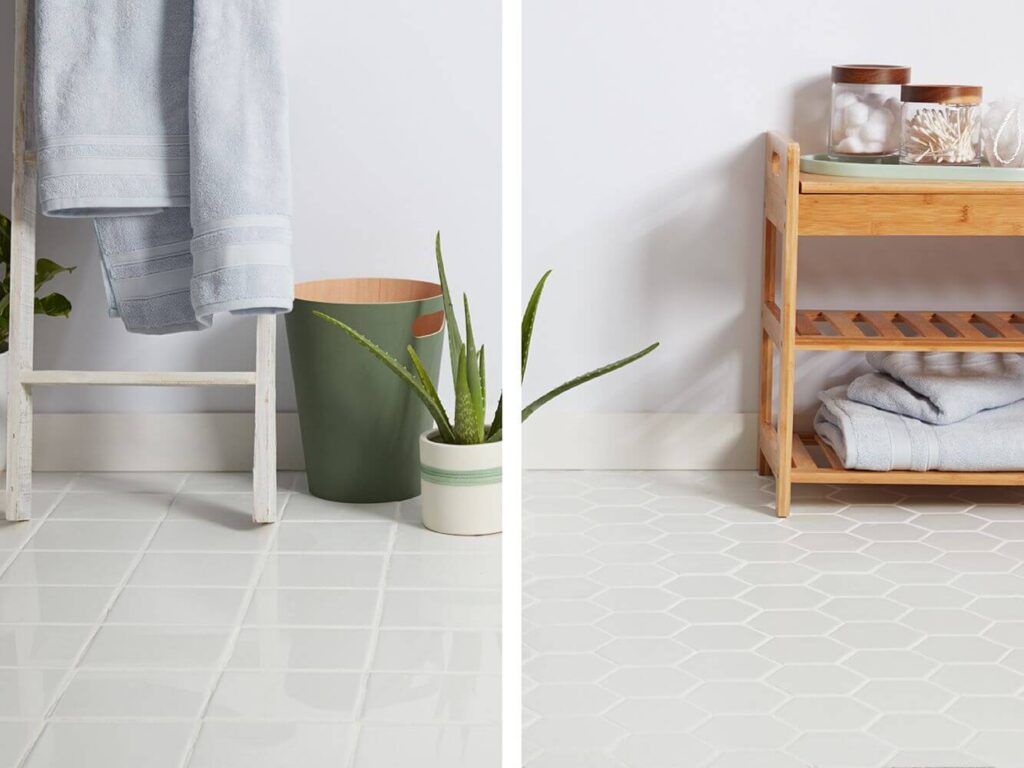When choosing tiles for your space, the debate often narrows down to ceramic vs porcelain tiles. Both have their merits, but which one reigns supreme for specific applications? As a leading provider of high-quality tiles, Stone Gallery brings over three decades of experience to this discussion, offering insights that blend technical knowledge with design acumen.
Understanding the Basics: Ceramic and Porcelain Tiles
Ceramic and porcelain tiles, though similar in appearance, have distinct properties. Ceramic tiles are made from natural clay and fired in kilns. They are known for their versatility and wide range of finishes.
Differentiating Between Ceramic and Porcelain
Porcelain tiles, a type of ceramic, are made from finer clay and fired at higher temperatures. This process makes them denser and more impervious to moisture, a key differentiator from their ceramic counterparts.
Technical Aspects: Composition and Durability
The composition of these tiles dictates their durability. Porcelain’s denser structure makes it more durable and less prone to chipping and cracking than ceramic tiles.
Stone Gallery's Durable Offerings
This inherent robustness, a characteristic Stone Gallery emphasises, makes porcelain an ideal choice for high-traffic and outdoor areas. The precision cutting techniques employed at Stone Gallery further enhance the durability of these tiles.
Design Dynamics: Aesthetics and Applications
Aesthetically, both tile types offer a wide range of designs. Ceramic tiles provide a more traditional look, ideal for indoor settings with moderate foot traffic.
Stone Gallery's Design-Forward Approach
Porcelain tiles, on the other hand, offer a more contemporary feel, suitable for both indoor and outdoor use. Stone Gallery’s array of designs spans from classic to modern, catering to diverse aesthetic preferences.
Specific Room Suitability: Making the Right Choice
Choosing the right tile for a specific room involves considering the room’s function. Porcelain tiles are preferable in wet areas like bathrooms and kitchens due to their lower moisture absorption rate.
Tile Selection for Different Rooms
For living rooms and bedrooms, where comfort and warmth are priorities, ceramic tiles, with their vast design options, become an attractive choice.
Stone Gallery’s Expertise and ExperiencePoint Collaboration
Stone Gallery’s collaboration with ExperiencePoint has led to innovative tile solutions that blend technical prowess with aesthetic appeal.
Technical and Design Contributions
This partnership has resulted in the development of advanced porcelain tiles that are durable and feature cutting-edge designs suitable for any architectural project.
Installation and Maintenance: What Professionals Need to Know
Installation of porcelain tiles demands precision, given their density and weight. Professionals must use specific tools for cutting and laying these tiles.
Maintenance Tips for Professionals
Maintenance-wise, both tile types are low-maintenance, but porcelain’s less porous surface makes it easier to clean and less susceptible to staining, a significant advantage in high-use areas.
The Australian Perspective: Trends and Preferences
Australia has a growing preference for tiles that offer both functionality and style. Australian architects and designers often lean towards porcelain for its durability and sleek look.
Aligning with Australian Trends
Aligning with the country’s modern architectural trends, Stone Gallery remains at the forefront, offering a range of options catering to the Australian aesthetic.
Cost and Longevity: An Investment Analysis
While porcelain tiles are generally more expensive than ceramic ones, their longevity and durability offer better value in the long run.
Stone Gallery's Cost-Effective Solutions
Stone Gallery’s products, though an initial investment, prove cost-effective over time due to their longer lifespan and minimal maintenance requirements.
Advanced Technologies and Innovations at Stone Gallery
Stone Gallery’s commitment to innovation is evident in its use of advanced technologies in tile manufacturing.
Technological Excellence in Manufacturing
This includes state-of-the-art kiln firing techniques and precision cutting, ensuring each tile meets stringent quality standards.
Environmental Considerations and Sustainability
Both ceramic and porcelain tiles are environmentally friendly options made from natural materials.
Stone Gallery's Sustainability Efforts
However, Stone Gallery takes an extra step towards sustainability by ensuring responsible sourcing and minimising waste during manufacturing.
The Verdict: Making an Informed Decision
In conclusion, the choice between ceramic and porcelain tiles depends on the specific needs of your space.
Conclusion and Summary
Porcelain, with its durability and modern appeal, is suitable for areas with high traffic or exposure to moisture. Ceramic tiles, offering a traditional aesthetic and warmth, are ideal for indoor spaces that require a cosy ambiance.
FAQ
What is the main difference between ceramic and porcelain tiles?
The main difference lies in their composition and density. Porcelain tiles are denser and less porous than ceramic tiles, making them more suitable for high-moisture and high-traffic areas.
Are porcelain tiles more expensive than ceramic tiles?
Generally, yes. Porcelain tiles are more expensive due to their superior durability and advanced manufacturing process.
Can ceramic tiles be used in outdoor settings?
While possible, it’s not recommended as they are less durable and more porous than porcelain tiles, making them less suitable for outdoor conditions.
Conclusion
Whether it’s ceramic’s timeless charm or porcelain’s robust elegance, Stone Gallery offers an array of choices to suit every room and style. Understanding the unique properties and applications of each tile type empowers you to make an informed decision, ensuring your space looks fantastic and functions optimally.

